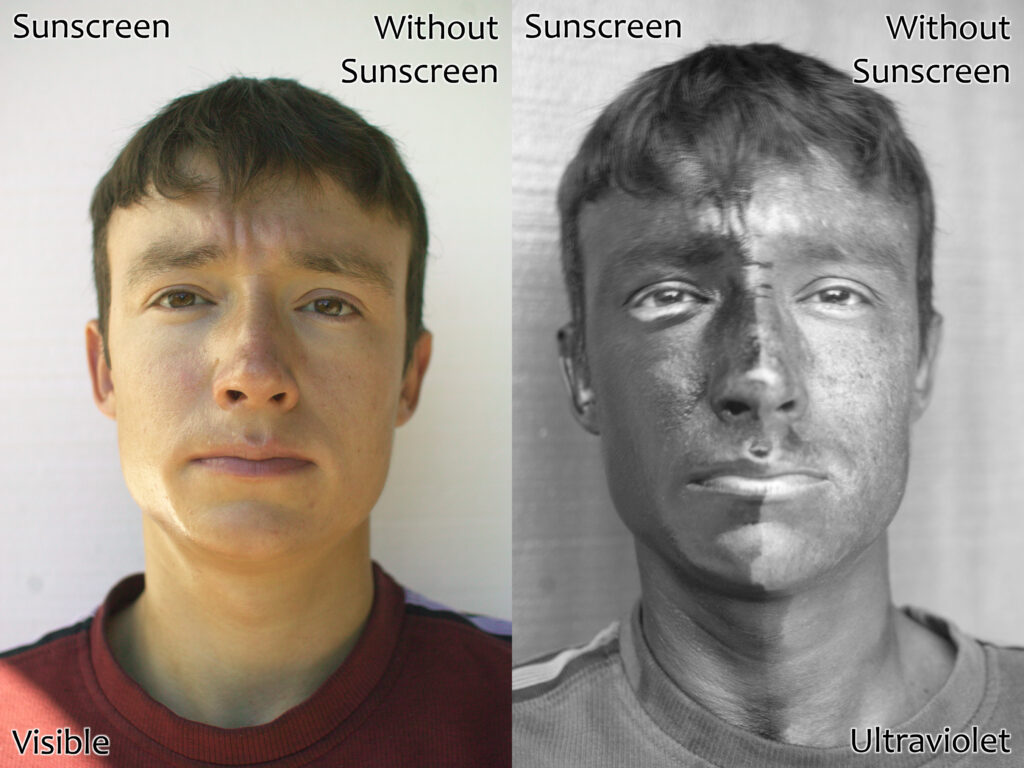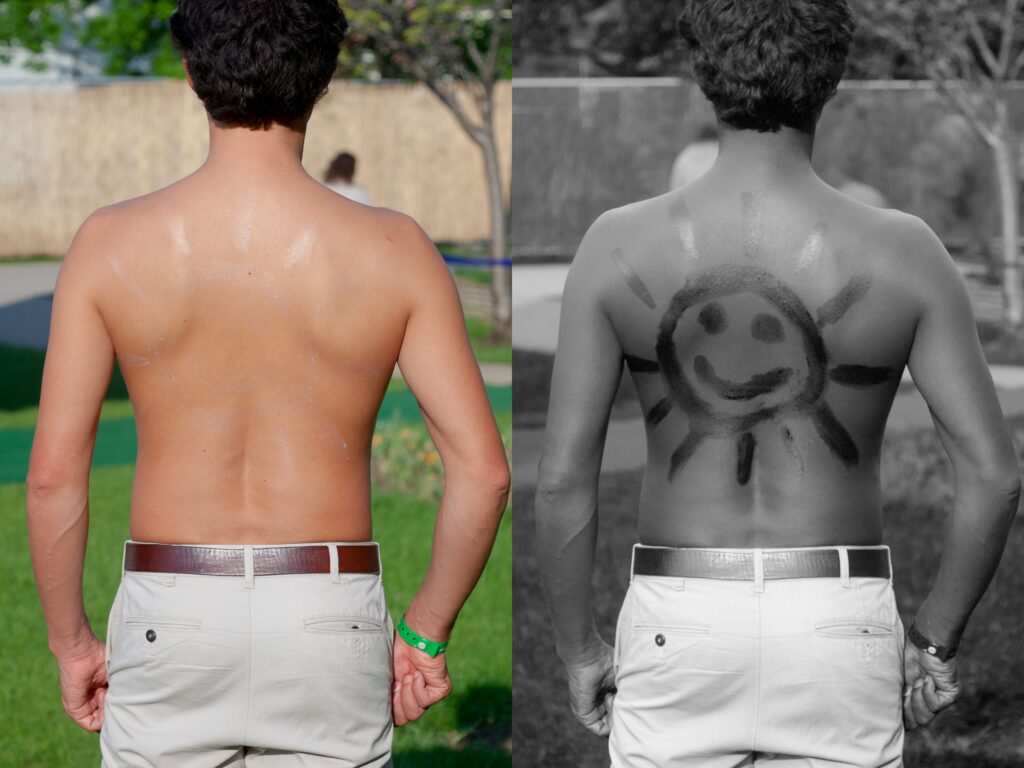By Henrylito D. Tacio
Photos by Gregory C. Ira and Wikipedia
Generally, fishers who use cyanide and dynamite to catch fish are almost always blamed for the annihilation of the ecologically-fragile coral reefs. Unknowingly, people who go to the beach and swim also contribute to the obliteration of one of the most diverse ecosystems in the world.
People, including physicians, nurses, and other health professionals, go to the beach to enjoy, relax and have fun. To protect their skin from the scorching heat of the sun, they apply sunscreens to their bodies, particularly those that are directly exposed to the heat.
Sunscreens — also known as sunblock, suntan lotion, sunburn cream, sun cream, or block out — are products combining several ingredients that help prevent the sun’s ultraviolet (UV) radiation from reaching the sensitive skin.
Even though UV rays make up only a very small portion of the sun’s rays, they are the leading cause of the sun’s damaging effects on the skin. Medical science tells us there are three types of UV rays: UVA, UVB, and UVC.
UVA rays age skin cells and can damage their DNA. These rays are linked to long-term skin damage such as wrinkles, but they are also thought to play a role in some skin cancers. On the other hand, UVB rays have slightly more energy than UVA rays. They can damage skin cells’ DNA directly and are the main rays that cause sunburns. They are also thought to cause most skin cancers.

UVC rays, meanwhile, have more energy than the other types of UV rays, but they don’t get through our atmosphere and are not in sunlight. They are not normally a cause of skin cancer.
To avoid getting skin cancer, sunscreens have been introduced. But depending on the mode of action, sunscreens can be classified into physical sunscreens (that is, those that reflect the sunlight) or chemical sunscreens (that is, those that absorb the UV light).
In the United States, medical organizations such as the American Cancer Society recommend the use of sunscreen because it aids in the prevention of squamous cell carcinomas. Diligent use of sunscreen can also slow or temporarily prevent the development of wrinkles and sagging skin.
Sunscreens, however, vary in their ability to protect against UVA and UVB. “Sunscreens should be applied 30 minutes before sun exposure to allow the ingredients to fully bind to the skin,” the Skin Cancer Organization notes on its website. “Reapplication of sunscreen is just as important as putting it on in the first place, so reapply the same amount every two hours. Sunscreens should also be reapplied immediately after swimming, toweling off, or sweating a great deal.”
People who use sunscreen may be protecting their skin from cancer, but in return, they are killing coral reefs, which are considered the tropical rainforests of the sea. That’s according to a new study made by marine scientists from Virginia, Florida, Israel, the US National Aquarium, and the US National Oceanic and Atmospheric Administration (NOAA).

The reason: sunscreens contain oxybenzone, also known as BP-3 or Benzophenone-3, which gets into the water via swimmers and wastewater from coastal septic systems. It is this chemical that blocks UV rays.
“The chemical not only kills the coral, it causes DNA damage in adults and deforms the DNA in coral in the larval stage, making it unlikely they can develop properly,” said a news release of the study, which was published in Archives of Environmental Contamination and Toxicology.
A news report circulated by the Agence France Presse (AFP) said that oxybenzone could also be found on lipstick, mascara, and shampoo. “The European Union’s International Chemical Secretariat has already established it as a threat to human health and called for it to be replaced with another, safer ingredient,” AFP said.
The scientists who conducted the study did their research in Hawaii and the U.S. Virgin Islands. They found out that even “a tiny amount of oxybenzone-containing sunscreen can damage corals,” to quote the words of Dominique Mosbergen, a senior writer of The Huffington Post. Or, as the Washington Post noted: “the equivalent of a drop of water in a half-dozen Olympic-sized swimming pools” was sufficient to cause harm.
Across the world each year, up to 14,000 tons of sunscreen lotions are discharged into coral reefs, and much of it “contains between 1 and 10 percent oxybenzone,” said the authors, who estimated that “at least 10 percent of reefs at risk of high exposure.”
Coral reefs, which occupy just 0.17% of the ocean floor, have been touted as “Eden beneath the waves.” The NOAA describes them as “some of the most diverse and valuable ecosystems on Earth.” “Essential life-support systems” necessary for human survival is how the World Conservation Union considers them.
Reefs are crucial to the well-being of other marine life as they are home to perhaps one-quarter of all marine species. The biodiversity of reefs is also “considered key to finding new medicines for the 21st century,” NOAA said. “Many drugs are now being developed from coral reef animals and plants as possible cures for cancer, arthritis, human bacterial infections, viruses and other diseases.”

Unfortunately, coral reefs are on the verge of extinction. This is particularly true in the Philippines, whose coral reef area — estimated at 26,000 square kilometers — is the second largest in Southeast Asia.
But there is bad news. The Inventory of the Coral Resources of the Philippines in the 1970s found only about 5% of the reefs to be in excellent condition, with over 75% coral cover (both hard and soft).
Another study conducted in 1997 showed only 4% of reefs in excellent condition (75% hard or soft coral cover), 28% in good condition (50-75% coral cover), 42% in fair condition (25-50% coral cover), and 27% in poor condition (less than 25% coral cover).
Some years back, leading marine scientists ranked the coral reefs in the Philippines as among the most threatened in Southeast Asia. Among those listed as culprits were overfishing, destructive fishing, sedimentation, and pollution.
“Although coral reefs have always been subject to natural disturbances – disease, predator outbreaks, and climatic disruptions such as hurricanes and the El Niño – natural damage is now being compounded by human-induced disturbances,” noted Coral Reefs: Valuable but Vulnerable,” a discussion paper published by the World Wide Fund for Nature (WWF).
According to Dr. Angel C. Alcala, former head of the Department of Environment and Natural Resources, there are three major types of coral reefs. These are fringing type (those found on the edges of islands and which constitutes 30% of the country’s coral reefs); the barrier type (best exemplified by the Dajanon Reef of Central Visayas); and the atoll (of which the Tubbataha and Cagayan Reef in the Sulu Sea are ideal examples).
Unknowingly, corals are the dried and bleached skeletons of soft-bodied animals that live in the warm, sunlit waters of tropical seas and look more like plants and rocks than animals.
The central part of the natural coral is the polyp – the extraordinary flower-like animal with a tube-like body and finger-like tentacles. “Coral polyps get nutrition in two ways,” explains Lindsay Bennett, author of globetrotter island guide, Philippines. “They catch their food by means of stinging tentacles that paralyze any suitable prey – microscopic creatures called zooplankton – and also engage in a symbiotic relationship with zooxanthellae that live within the polyp structure.”
Coral polyps reproduce in two ways: asexually (by the division of existing individual polyps) and asexually (by combining egg and sperm from two different polyps). “This results in a free-swimming polyp that will be carried by ocean currents to find a new colony and commence a new reef,” Bennet writes.
According to the new study, the chemical that blocks ultraviolet rays causes “gross deformities” on coral polyps. It also damages the DNA aside from acting as an “endocrine disruptor.”
The coral reef is the world’s most diverse marine ecosystem and one of its most productive. It is home to some 4,000 species of fish, along with a vast array of other life forms – mollusks, crustaceans, sea urchins, starfish, sponges, tube-worms, and many more.
Meanwhile, the US National Park Service recommends that instead of using sunscreens that contain oxybenzone, people should apply “reef-friendly” sunscreen made with titanium oxide or zinc oxide.

